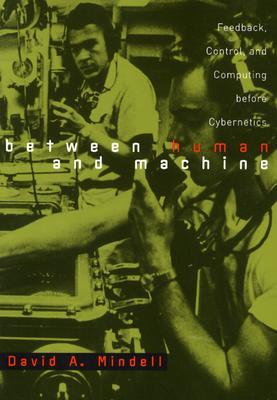David Alan Grier: Too Soon to Tell: Essays for the End of the Computer Revolution (2009)
Filed under book | Tags: · computing, engineering, history of computing, history of technology, technology

Based on author David A. Grier’s column “In Our Time,” which runs monthly in Computer magazine, Too Soon To Tell presents a collection of essays skillfully written about the computer age, an era that began February 1946. Examining ideas that are both contemporary and timeless, these chronological essays examine the revolutionary nature of the computer, the relation between machines and human institutions, and the connections between fathers and sons to provide general readers with a picture of a specific technology that attempted to rebuild human institutions in its own image.
Publisher Wiley-IEEE, 2009
ISBN 0470080353, 9780470080351
238 pages
PDF (updated on 2012-7-25)
Comment (1)Wolfgang Lefèvre (ed.): Picturing Machines 1400-1700 (2004)
Filed under book | Tags: · architecture, data visualisation, drawing, engineering, geometry, history of science, history of technology, media archeology, science, technology

“Technical drawings by the architects and engineers of the Renaissance made use of a range of new methods of graphic representation. These drawings—among them Leonardo da Vinci’s famous drawings of mechanical devices—have long been studied for their aesthetic qualities and technological ingenuity, but their significance for the architects and engineers themselves is seldom considered. The essays in Picturing Machines 1400-1700 take this alternate perspective and look at how drawing shaped the practice of early modern engineering. They do so through detailed investigations of specific images, looking at over 100 that range from sketches to perspective views to thoroughly constructed projections.
In early modern engineering practice, drawings were not merely visualizations of ideas but acted as models that shaped ideas. Picturing Machines establishes basic categories for the origins, purposes, functions, and contexts of early modern engineering illustrations, then treats a series of topics that not only focus on the way drawings became an indispensable means of engineering but also reflect the main stages in their historical development. The authors examine the social interaction conveyed by early machine images and their function as communication between practitioners; the knowledge either conveyed or presupposed by technical drawings, as seen in those of Giorgio Martini and Leonardo; drawings that required familiarity with geometry or geometric optics, including the development of architectural plans; and technical illustrations that bridged the gap between practical and theoretical mechanics.”
Publisher MIT Press, 2004
ISBN 0262122693, 9780262122696
347 pages
PDF (updated on 2019-12-2)
Comment (0)David A. Mindell: Between Human and Machine: Feedback, Control, and Computing before Cybernetics (2002)
Filed under book | Tags: · computing, cybernetics, engineering, history of computing, history of technology, industry, information theory, machine, military, networks, noise, science, technology, telephone

Today, we associate the relationship between feedback, control, and computing with Norbert Wiener’s 1948 formulation of cybernetics. But the theoretical and practical foundations for cybernetics, control engineering, and digital computing were laid earlier, between the two world wars. In Between Human and Machine: Feedback, Control, and Computing before Cybernetics, David A. Mindell shows how the modern sciences of systems emerged from disparate engineering cultures and their convergence during World War II.
Mindell examines four different arenas of control systems research in the United States between the world wars: naval fire control, the Sperry Gyroscope Company, the Bell Telephone Laboratories, and Vannevar Bush’s laboratory at MIT. Each of these institutional sites had unique technical problems, organizational imperatives, and working environments, and each fostered a distinct engineering culture. Each also developed technologies to represent the world in a machine.
At the beginning of World War II, President Roosevelt established the National Defense Research Committee, one division of which was devoted to control systems. Mindell shows how the NDRC brought together representatives from the four pre-war engineering cultures, and how its projects synthesized conceptions of control, communications, and computing. By the time Wiener articulated his vision, these ideas were already suffusing through engineering. They would profoundly influence the digital world.
As a new way to conceptualize the history of computing, this book will be of great interest to historians of science, technology, and culture, as well as computer scientists and theorists.
Publisher Johns Hopkins University Press, 2002
ISBN 0801868955, 9780801868955
439 pages
Mindell’s lecture about the book at MIT (video, 78 min, 2002)
Review (Larry Owens, History of Science and Technology)
Download (removed on 2014-9-18 upon request of the author)
Comment (1)
